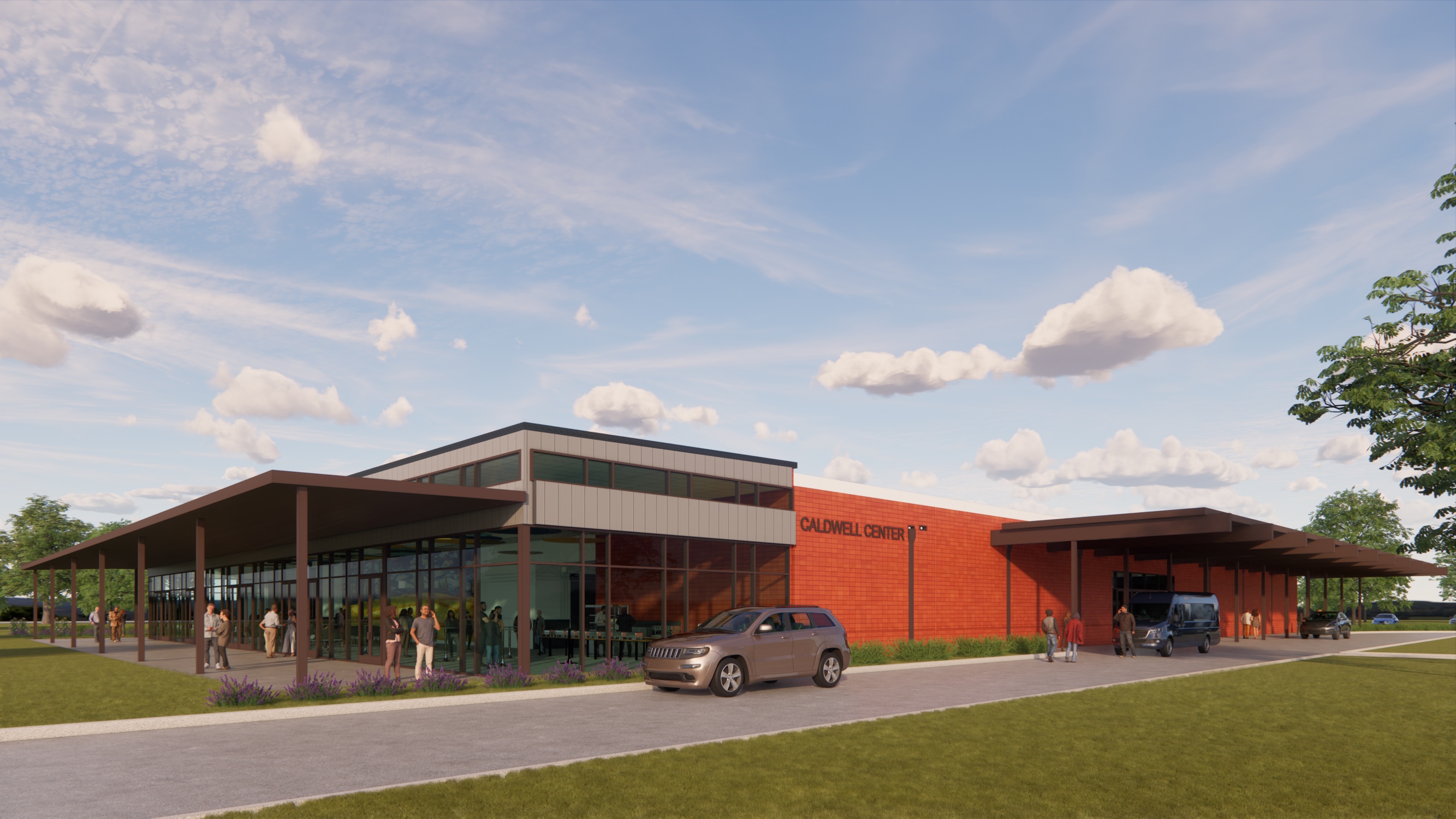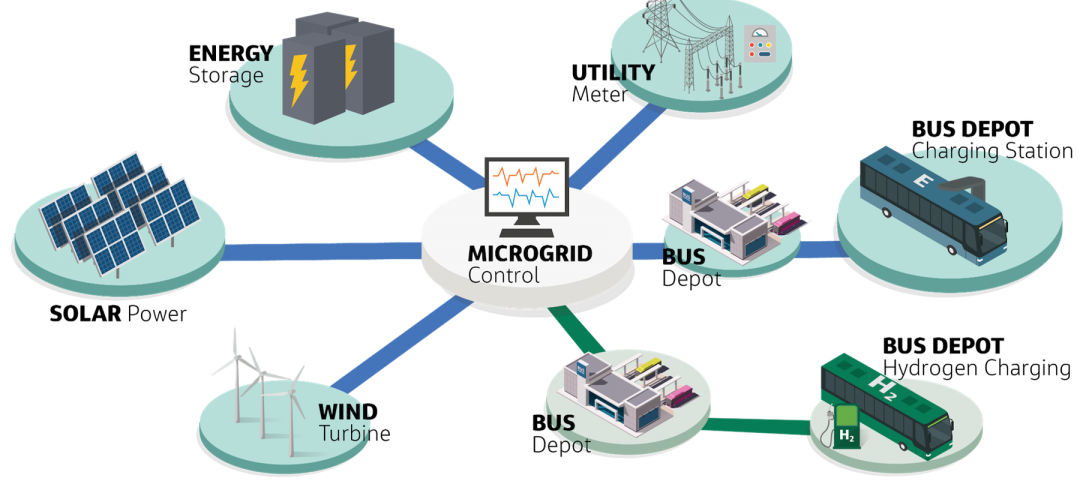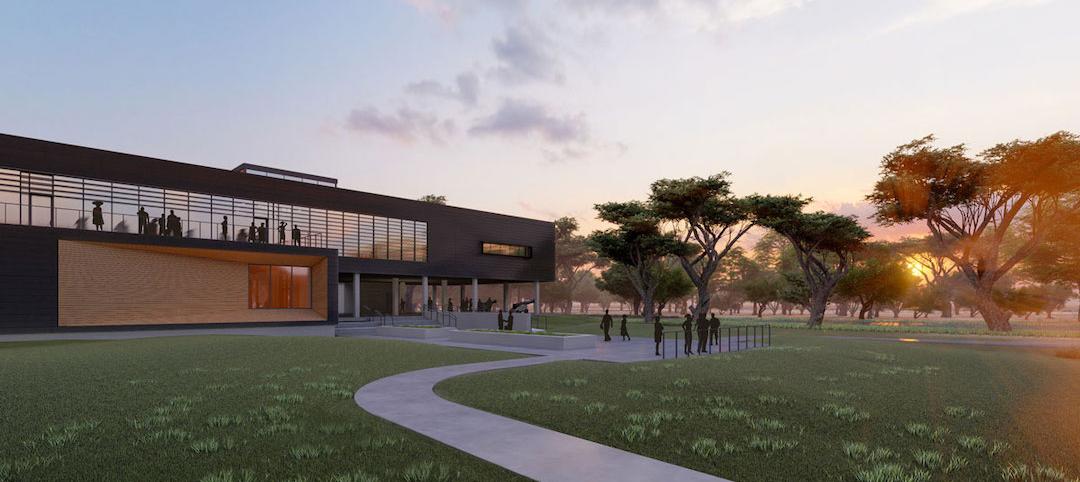A new 45,000 sf FEMA-operated evacuation shelter in the Greater Austin metropolitan area will begin construction this fall. The center will be available to house people in the event of a disaster such as a major hurricane and double as an events venue when not needed for emergency shelter.
The Caldwell County Evacuation Center will house up to 350 people comfortably within its main hall. Supply trucks can deliver necessities to the back of building which includes designated office space to accommodate FEMA operations and a warming kitchen where food will be served. Overlooking the sweeping natural landscape, an elevated outdoor patio and adjacent interior concourse will function as a breakout space for events and a provide outdoor connectivity for evacuees.
Warm tones and wood accents will be incorporated throughout to combat the stale environment often seen in evacuation shelters. Elevated fixtures and details will be included in the restrooms such as floor-to-ceiling partitions between each stall and individual shower rooms for an increased sense of privacy and space. Families seeking shelter with young children will also have three designated mothers’ rooms to choose from for nursing and pumping, as well as extra changing tables in both the women’s and men’s restrooms.
Extra charging outlets will be deployed in the corridors and common spaces to help decrease congestion in the main hall and encourage evacuees to explore alternative spaces with natural light and outdoor views. Acoustic measures in the ceiling and wall panels will be integrated to help mitigate noise throughout the building, not only for functional purposes but also to reduce overstimulation when the building is at capacity.
The facility is likely to host residents of coastal areas of the state during hurricane emergencies. Damaging hurricanes have become more common in Texas, with eight of the 10 most active years occurring since the mid-1990s. These storms have impacted thousands of coastal area residents. Hurricane Harvey, for example, displaced approximately 32,000 people in shelters across the state. Inland areas such as the Austin metroplex can provide temporary shelter for these residents.
Owner and/or developer: County of Caldwell
Design architect: Method Architecture
Architect of Record: Method Architecture
MEP Engineer: IMEG
Civil Engineer: Doucet, a Kleinfelder Company
Structural Engineer: IMEG
Landscape Architect: Coleman & Associates
Grant Administrator: Langford Community Management Services
General Contractor: N/A
Related Stories
Sponsored | Resiliency | Jan 24, 2022
Norshield Products Fortify Critical NYC Infrastructure
New York City has two very large buildings dedicated to answering the 911 calls of its five boroughs. With more than 11 million emergency calls annually, it makes perfect sense. The second of these buildings, the Public Safety Answering Center II (PSAC II) is located on a nine-acre parcel of land in the Bronx. It’s an imposing 450,000 square-foot structure—a 240-foot-wide by 240-foot-tall cube. The gleaming aluminum cube risesthe equivalent of 24 stories from behind a grassy berm, projecting the unlikely impression that it might actually be floating. Like most visually striking structures, the building has drawn as much scorn as it has admiration.
Sponsored | Resiliency | Jan 24, 2022
Blast Hazard Mitigation: Building Openings for Greater Safety and Security
Microgrid | Jan 16, 2022
Resilience is what makes microgrids attractive as back-up energy controls
Jacobs is working with clients worldwide to ensure mission critical operations can withstand unexpected emergencies.
Sponsored | BD+C University Course | Jan 12, 2022
Total steel project performance
This instructor-led video course discusses actual project scenarios where collaborative steel joist and deck design have reduced total-project costs. In an era when incomplete structural drawings are a growing concern for our industry, the course reveals hidden costs and risks that can be avoided.
Resiliency | Oct 19, 2021
Achieving resiliency through integrated design
Planning for and responding to the effects of adverse shocks and stresses is typically what architects and engineers have always thought of as good standard design practices.
Resiliency | Aug 19, 2021
White paper outlines cost-effective flood protection approaches for building owners
A new white paper from Walter P Moore offers an in-depth review of the flood protection process and proven approaches.
Resiliency | Aug 19, 2021
White paper outlines cost-effective flood protection approaches for building owners
A new white paper from Walter P Moore offers an in-depth review of the flood protection process and proven approaches.
Resiliency | Aug 4, 2021
A new team forms to assess climate change’s effects on the built environment
Arup and First Street Foundation are using extensive datasets to develop risk-mitigating resilience solutions.
Resiliency | Jul 15, 2021
A new report urges federal investment in healthier buildings
The National Institute of Building Sciences also calls for code changes and greater cooperation between building owners and the AEC community.
Resiliency | Jun 24, 2021
Oceanographer John Englander talks resiliency and buildings [new on HorizonTV]
New on HorizonTV, oceanographer John Englander discusses his latest book, which warns that, regardless of resilience efforts, sea levels will rise by meters in the coming decades. Adaptation, he says, is the key to future building design and construction.












![Oceanographer John Englander talks resiliency and buildings [new on HorizonTV] Oceanographer John Englander talks resiliency and buildings [new on HorizonTV]](/sites/default/files/styles/list_big/public/Oceanographer%20John%20Englander%20Talks%20Resiliency%20and%20Buildings%20YT%20new_0.jpg?itok=enJ1TWJ8)




